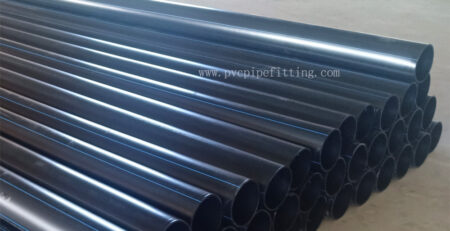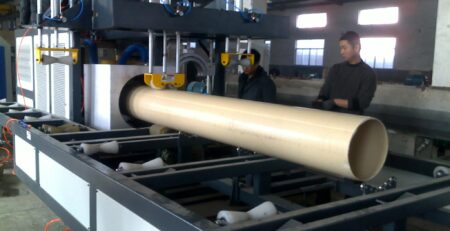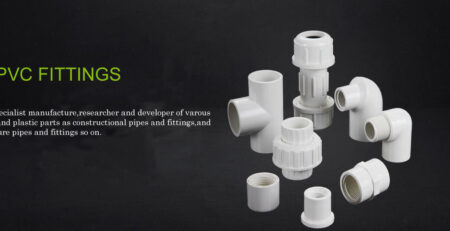Most people don’t know what types of pipes need to be used for underground water supplies. Here, we have given some ideas that can be followed.
What Types of Pipes Are Used for Underground Water Supply Lines?
What types of pipes are used for underground water supply lines? This is one of the most typical questions we are asked several times. Water supplies are crucial in ensuring sufficient water in our house.
Maybe we want to run water to our roof, garden area, or threshing barn. Perhaps we are constructing our own building and need to install our own line. Whatever the reason can be, we need to know the best pipes to use when running an underground line.
But, how would you know if it is the best or worst one? Well, when choosing pipes for underground water supply, inspect whether they are resistant to corrosion and rusting or not. Also, make sure the pipes you’ll use are durable and can tolerate extreme water pressure.
However, in this write-up, we have demonstrated what types of pipes you should use for underground water supplies and what things you should consider while choosing pipes. So, stay with us and keep reading.
What Types of Pipes Are Used for Underground Water Supply Lines?
Several types of pipes are available on the market for different prizes. But the fact is, all of them are not compatible with underground supplies. That’s why you have to choose the right one. But, choosing the right one from hundreds of options is difficult.
According to Plumbingpoints, before purchasing pipes for underground water supplies, you have to consider a few things, like material, chlorine resistance, installation, and many more. Keeping those facts in mind, we have enlisted some of the best pipes used for water supply lines. These include…
1. PVC Pipes
PVC stands for Polyvinyl Chloride Pipes, usually used as a part of the toilet, sink, or shower drain line. It has a plastic tubing system that is absolute for this type of usage and protects water from corrosion and dust better than other pipes. Apart from that, the PVC pipes are durable enough, and they last indefinitely unless they are at risk of some destruction.
The best part of the pipes is, they will be put up with high water pressure. For that reason, they are used in the main water supply line of a home. PVC pipes are comparatively lightweight than the traditional galvanized steel piping options; thus, you can efficiently work with them. These pipes hold smooth inner lining that safeguards against trash buildup and makes them more immune to obstructions.
Now come to the downsides of PVC pipes. PVC pipes come in limited sizes and are not equipped to withstand hot water and concerns over toxicity. PVC indeed has all the qualities set by the American National Standards Institute. But it may produce polyvinyl chloride chemicals into drinking water that causes respiratory disease. For that reason, in some states, PVC pipes have been banned from transporting drinking water.
2. PEX Pipes
The other name of PEX pipes is cross-linked polyethylene, which means it is an inexpensive plastic tubing generally used for water supply lines. It is similar to PVC that prevents corrosion or rust from leaching into the water.
Many professionals prefer PEX pipes as they are satisfactorily flexible and easy to twist through basements, walls, ceilings, and even in crawl spaces.
Moreover, they are significantly robust to tolerate the water supplies’ pressure. Besides that, this type of pipe is color-coded for both cold and hot water, making it easy to specify for plumbers during the installation.
3. ABS Pipes
ABS means Acrylonitrile Butadiene Styrene, which is close to PVC pipes in nature but is easy to specify due to its black color. This type of pipe is flexible in cold temperatures that are mostly used for vent and drain lines. This kind of pipe is straightforward to install, but it can wrap because of direct sunlight. Aside from, compared to other types of pipes, they are noisier than other pipes and cause disturbance among some house owners.
4. Copper Pipes
It is one of the most well-known pipes in the plumbing industry for more than a decade. Copper pipes can last more than 50 years and are generally found in showers, tubs, sinks, and other fixtures in homes, whether old or new. These pipes are most popular among plumbers and new house owners because they are corrosion resistant and perfectly suited to maintain the quality of the water.
Copper pipes can endure extreme water pressure and are indulgent of both cold and hot water temperatures. They are environment-friendly as well because they can be recycled too.
There are some drawbacks of it that you should contemplate before purchasing. These kinds of pipes are so rigid: thus, plumber can’t use them in tough spaces. On top of that, Copper pipes are the most expensive, and r continues to rise. If you have a specific budget, we recommend you not to use it.
5. Cast Iron and Galvanized Steel Pipes
You’ll rarely find cast Iron and galvanized steel pipes in the new construction sites. They were mostly used in the early 20th century. But iron and galvanized pipes are still significantly durable and used for parts of the water distribution system today.
These pipes are usually used as sewer pipes or for other drainage purposes. However, they are still popular among house owners because they are heat-resistant and decrease the sound of moving water.
The drawbacks of the pipes are, they are flat-out to rust and corrosion. Over time, this will impact its ability to manage a clean water supply. However, these pipes have predominantly been replaced by PEx or copper pipes in residential plumbing repairs.
Things You Should Consider Before Purchasing Pipes for Underground Water Supply
In this section, a few things have been discussed that you should know before buying pipes for underground water supply lines. If you can contemplate the things we have demonstrated below, you can hopefully choose the right one.
1. Materials
This is the first thing that you must contemplate. Several materials are used to make pipes for potable drinking water. The most common materials are galvanized steel, PVC, copper, CPVC, and PEX.
Pipes that are made of galvanized steel can protect the pipe from rust and corrosion. Once, it was one of the most widely used pipes, but it lost its position because of the time and labor needed to install and cut and thread.
Pipe with copper material used for both cold and hot water and installed for refrigerant lines in the HVAC system. You can use them for both above-ground and underground water systems. They can be affected by soil, but they comparatively last longer.
Now come to the PVC pipes used in different plumbing projects, from main lines to drainage. Apart from that, this pipe is a good choice for irrigation piping, pool, spa, home, and building mission.
Another type of material is CPVC that is used to do plumbing projects. Pipes with CPVC can survive in high temperatures up to 180 degrees Fahrenheit, relying on the thickness. You can use them in both cold and hot water as well.
The most popular pipe nowadays is PEX; it is widely used due to its temperature resistance capacity. They can be used in both cold and hot water in commercial or residential projects. The longevity of the pipe is 50 years or more.
2. Installation
This is another essential thing that you should take into consideration. Before buying, make sure that the pipe is easy to join with. Besides, be sure that you can quickly repair or change it when it is needed. Pipes are connected in several ways, but not all of them let you do it conveniently. You have to choose those types of pipes that can be joined with multiple tube connections.
3. Chlorine Resistance
You need to purchase pipes that are guarded with chlorine resistance so that you can safely drink water. You will find several ordinary pipes that don’t hold chlorine resistance, cause respiratory disease, and are especially hazardous for children.
Final Thought
So, this article was all about what types of pipes you can use for underground water supply and what things you should consider while choosing pipes for your home. We have mentioned 5 different types of pipes here and demonstrated their advantages and disadvantages individually. You can choose any of them contemplating water pressure, temperature, and direct sunlight. The last thing, we’ll highly recommend you select the pipes that have choline resistance.







